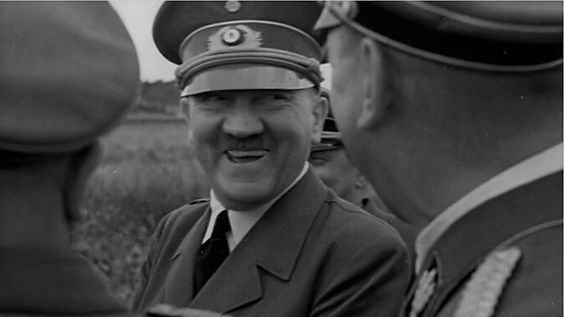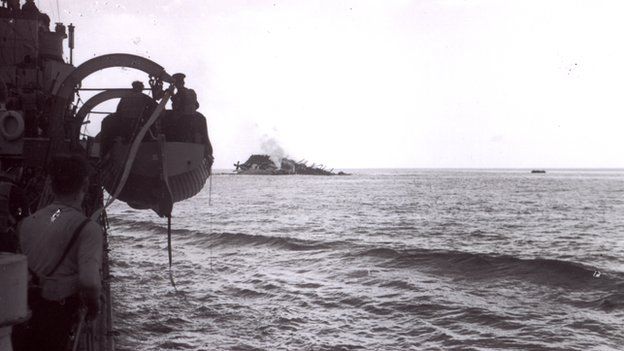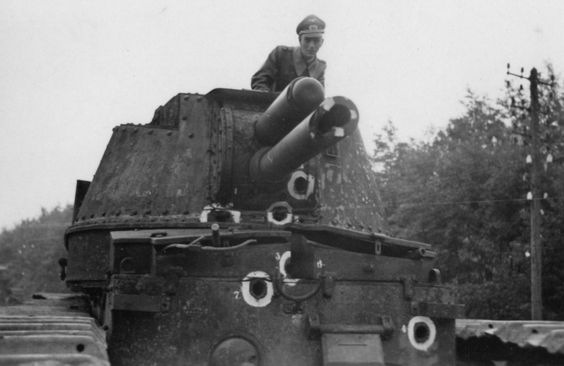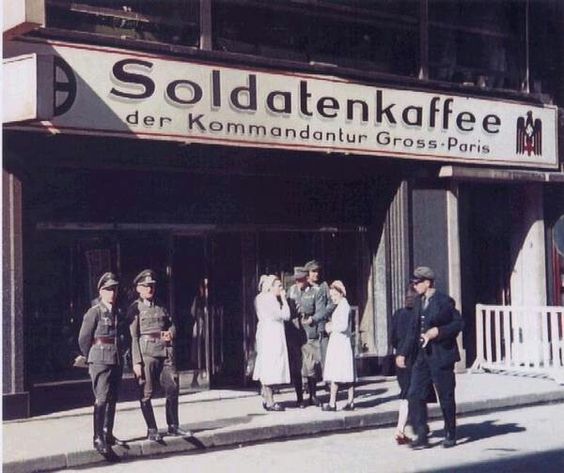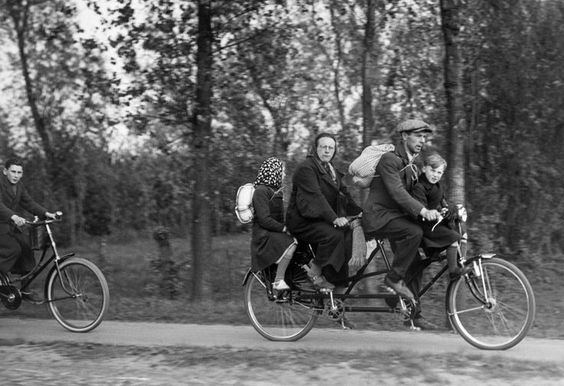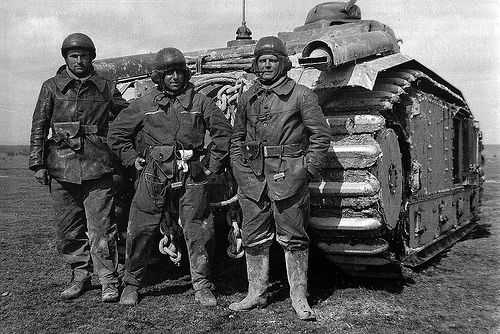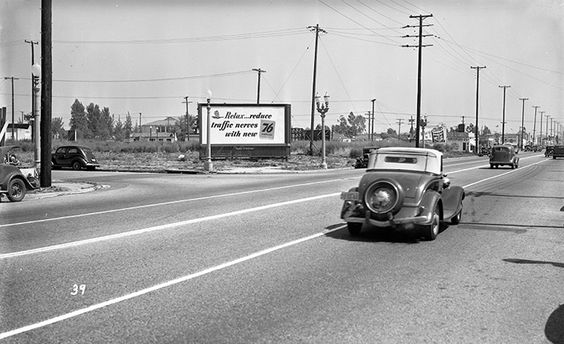Saturday 3 August 1940
 |
| Italian troops occupying British Somaliland. |
The British are led by Brigadier Arthur Reginald Chater. His troops are almost exclusively local colonial soldiers armed with rifles and supplied by camels. His total man-count is about 4,000 soldiers.
The Italians, meanwhile, have 350,000 men in Abyssinia alone, and 30% of them are fully-armed Italians. General Nasi has support from the Regia Aeronautica and plenty of artillery, tanks and mechanized forces. Aside from the brief invasion of France in June that produced virtually no successes of consequence, this is the first real test (an extremely easy one) of Italian arms in World War II. It should be a "slam dunk" victory.
 |
| British Somaliland on the Gulf of Aden. |
After much study, the Luftwaffe General Staff (OKL) today finally sets forth a plan for a maximum effort. The true offensive is to begin shortly. Called the Eagle Attack (Adlerangrif), the Operation will commence with a one-day battle to be called Eagle Day (Adler Tag). There are three projected phases:
- Opening five days: attacks on a 60-90 mile radius from London;
- Next three days: attacks on a 30-60 mile radius from London;
- Next five days: attacks within a 30-mile radius of London.
- Luftflotte 2 in central France (General Albert Kesselring);
- Luftflotte 3 in northern France and the low countries (General Hugo Sperrle);
- Luftflotte 5 in Norway, primarily based at Stavanger (General Hans-Jürgen Stumpff).
Convoys off of Harwich, Clacton, and Orfordness receive attention, but there are few results. The Luftwaffe finds and destroys British freighter Statira.
RAF No. 85 Squadron reports shooting down a Bf 110 east of Southwold during the afternoon, while RAF No. 603 Squadron reports downing a Heinkel He 111 off of Montrose.
Night raids continue, but they are relatively minor. The Bristol Aeroplane Company at Filton once again is attacked, this time by a pair of Heinkel He 111s at 22:16. There are multiple intrusions along the coast during the night, and many of these in the Essex region involved further leaflet dropping of Hitler's "Last Appeal to Reason" speech of 19 July. Bombs are reported at or near Bradford, Liverpool, Crew and the Firth of Forth.
The incessant air war is wearing on the RAF despite its continued successes in the duel with the Luftwaffe. Older planes are retained in service and can become deathtraps. As an example, today a Fairey Battle Mark 3 out of RAF No. 253 Squadron spontaneously bursts into flames on a routine target practice flight. Both crew parachute out (the rear gunner pulls his ripcord while still seated in the plane but gets pulled out with a broken leg) and the plane crashes near Causey. An incident like this might ground an entire class of airplanes in normal times, but these are not normal times.
More prototype Beaufighter 1F fighters are sent to the RAF for evaluation.
I,/JG52 (Hptm. Siegfried von Eschwege) moves from Bönninghardt to Cocquelles. I,/JG3 and Stab,/JG3 (ObLt Karl Vieck) move to Colembert.
European Air Operations: RAF Bomber Command continues attacking airfields in northwestern Europe, including raids on Amsterdam/Schiphol, Haamstede and Abbeville. Oil facilities at Rotterdam, the Ruhr, and the Rhineland, as well as the Kriegsmarine base at Kiel, are raided.
Battle of the Atlantic: U-57 (Oberleutnant zur See Erich Topp) torpedoes and sinks 2,161-ton Swedish freighter Atos north of Ireland. There are 27 survivors and one crewman perishes.
U-A (Kapitänleutnant Hans Cohausz) stops 4,201-ton Yugoslavian freighter Rad about 300 miles off the Senegal coast. After a search discloses chemicals bound for South Africa, the U-boat disembarks the crew into lifeboats and sinks the ship. While all this sounds neat and clean, the ship's crew still has quite a journey to land in some random spot - or maybe getting lucky and being found by a passing ship in the middle of the ocean. The men eventually are found by a passing freighter (the Grodno) and everyone survives.
British freighter Wychwood hits a mine and sinks in the North Sea.
Convoy OA 193 departs from Methil, Convoy OG 40 departs from Gibraltar.
A Canadian troop convoy with 6 transport vessels makes port in Great Britain.
Destroyer HMS Quorn (L 66) is commissioned.
 |
| F/L Dennis L "Tage" Armitage is appointed A Fight leader of No 266 Squadron RAF on 3 August 1940. As of yet, he has no victories. |
At Malta, the island's defenses have been successfully augmented by the arrival of the Hurricanes sent across by Operation Hurry (whose ships continue returning to Gibraltar today). There are no air raids today.
While the increased air defense is welcome, supplies on the island continue to run low. Ordinary convoys must make the long trip around South Africa and through the Suez Canal, which takes weeks. Governor Dobbie's people request that major convoys be run through every two months at a bare minimum.
Anglo/Japanese Relations: In a classic tit-for-tat, the British arrest two Japanese businessmen in London for suspicion of espionage. When the Japanese ambassador protests, the British adamantly deny that it has anything whatsoever to do with the Japanese arrest of about a dozen British businessmen in Tokyo six days before.
Franco/German Relations: Otto Abetz assumes office as German ambassador to Vichy France.
US Government: William Donovan heads back to New York by air after consultations with General Spaatz.
General Lesley McNair becomes Chief of Staff in charge of training ground troops.
Baltic States: Lithuania joins the other territories newly swallowed by the USSR in "voluntarily" becoming the Soviet Socialist Republic of Lithuania. This makes it the 14th constituent republic of the USSR.
Japan: The back-door path to the United States remains open for fleeing European refugees. Hikawa Maru out of Tokyo reaches San Francisco with 82 Jewish refugees, the latest in several such occurrences.
The Japanese government decries the United States ban on critical supplies such as aviation fuel. Both Prime Minister Prince Konoye and Foreign Minister Matsuoka issue statements emphasizing the importance of "the disposal of the China Affair" and the Japanese "mission" in the region.
American Homefront: A campaign is launched to solicit $500,000 in donations for the evacuation of British children to safer areas.
Future History: Ramón Antonio Gerardo Estévez is born in Dayton, Ohio. He moves to New York City around 1960, meets legendary Catholic activist Dorothy Day, fights for social justice, and drifts into an acting career. He changes his name to Martin Sheen (partially derived from legendary radio broadcaster Archbishop Fulton J. Sheen), gets a key break on "The Outer Limits" in 1963, and later stars on Broadway. After that, he begins getting regular guest appearances on the top television shows of the day such as "My Three Sons" and "Flipper." By the 1970s, he is starring in top Hollywood productions such as "Apocalypse Now." Martin Sheen remains active in the film industry to this day (2016) and has established an acting dynasty.
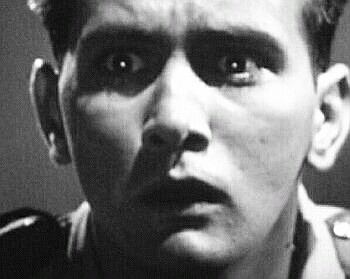 |
| Martin Sheen, born on 3 August 1940, in Outer Limits episode "The Defenders." |
August 1940
August 1, 1940: Two RN Subs Lost
August 2, 1940: Operation Hurry
August 3, 1940: Italians Attack British Somaliland
August 4, 1940: Dueling Legends in the US
August 5, 1940: First Plan for Barbarossa
August 6, 1940: Wipe Out The RAF
August 7, 1940: Burning Oil Plants
August 8, 1940: True Start of Battle of Britain
August 9, 1940: Aufbau Ost
August 10, 1940: Romania Clamps Down On Jews
August 11, 1940: Huge Aerial Losses
August 12, 1940: Attacks on Radar
August 13, 1940: Adler Tag
August 14, 1940: Sir Henry's Mission
August 15, 1940: Luftwaffe's Black Thursday
August 16, 1940: Wolfpack Time
August 17, 1940: Blockade of Britain
August 18, 1940: The Hardest Day
August 19, 1940: Enter The Zero
August 20, 1940: So Much Owed By So Many
August 21, 1940: Anglo Saxon Incident
August 22, 1940: Hellfire Corner
August 23, 1940: Seaplanes Attack
August 24, 1940: Slippery Slope
August 25, 1940: RAF Bombs Berlin
August 26, 1940: Troops Moved for Barbarossa
August 27, 1940: Air Base in Iceland
August 28, 1940: Call Me Meyer
August 29, 1940: Schepke's Big Day
August 30, 1940: RAF's Bad Day
August 31, 1940: Texel Disaster
2020

